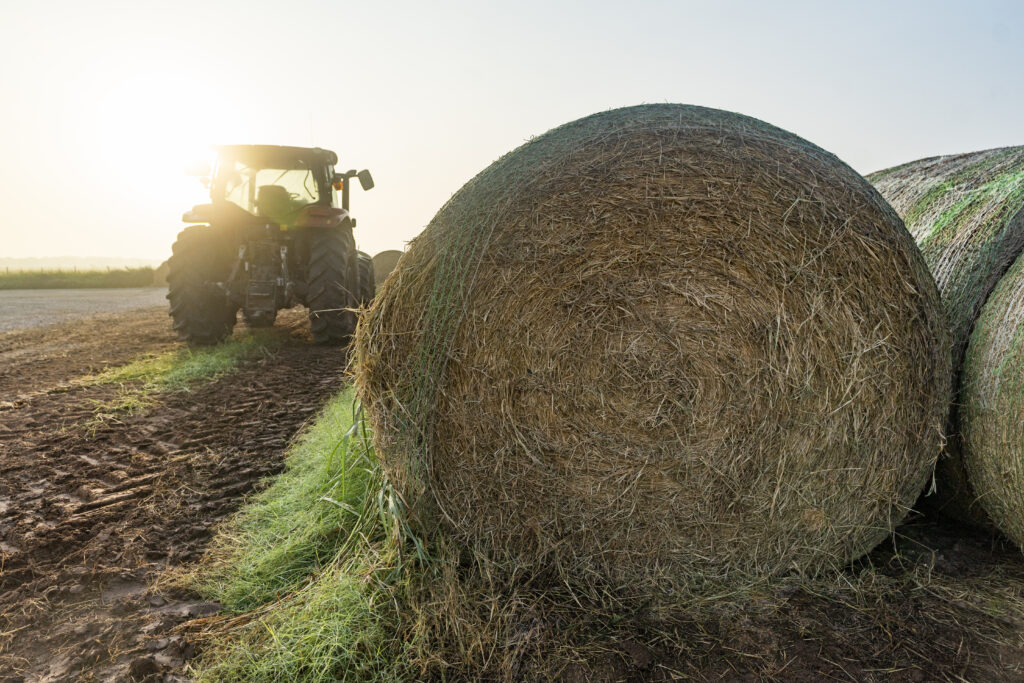Despite record low hay inventories in Texas in 2023, prospects for higher yields this hay season are being fueled by heavy rainfall across major production regions of Texas, according to Texas A&M AgriLife Extension Service experts.
Central, south central and east Texas hay production regions have received double-digit rainfall amounts in some areas. Coupled with warmer nighttime temperatures, these conditions have helped spark growth of warm-season forages used in hay production.
The prospects are welcomed considering national hay inventories last summer hit their lowest levels nationally since 1974 when U.S. Department of Agriculture-National Agricultural Statistics Service began tracking data. Drought throughout Texas exacerbated the problem.
“We still have hay shortages from last year,” said Vanessa Corriher-Olson, Ph.D., AgriLife Extension state forage specialist, Overton. “Parts of central and east Texas have had excellent rainfall this fall and spring. Ryegrass and clovers have done well. I’ve talked to some folks who are harvesting the ryegrass for hay. The challenge, of course, is to continue to get rainfall.”
Input costs
Fertilizer prices have been a thorn in the side for many producers after experiencing record prices over the past year. However, those price concerns have been somewhat eased as ammonium nitrate has scaled back to $530 a ton and ammonium sulfate, $490 a ton. Those prices are 20% to 30% less compared to levels seen two years ago.
Despite higher fertilizer costs, that hasn’t prohibited producers from continuing to fertilize hay meadows.
“I’m hearing more folks continuing to fertilize because they want or need the production rather than being more concerned about costs,” Corriher-Olson said. “We always recommend getting a soil test.”
In 2023, harvested hay acres in Texas was 4.6 million, up from 4.1 million acres in 2022. However, harvest numbers were considerably lower compared to 5.8 million harvested acres in 2021 and 5 million acres in 2020.
High hay prices
With those lower inventories of the past few years, hay prices have escalated.
“The cost of everything to produce hay has gone up, and I don’t anticipate they will come down,” Corriher-Olson said. “Most producers sell hay on a per-bale basis. Costs will remain high to produce hay and hay prices are expected to remain high due to everyone being short on hay. If we have drought again this summer, that will only exacerbate prices.”
Round bale prices vary between $95 a bale and $120 bale, Corriher-Olson said.
“The Coastal (Bermuda grass) is looking really good, we’re just hoping this rain doesn’t cut off,” said Truman Lamb, AgriLife Extension agent, Anderson County. “I’ve talked to two or three producers who say they have really good Coastal stands and will be ready to start cutting in about two to three weeks.”
Producers who have cut ryegrass and other cool-season forages are seeing yields of two bales to the acre and up to two-and-a-half bales to the acre.
Silage bales weighed 1,700 pounds with 50% moisture and 850 pounds of dry matter.
Lamb said more producers are collecting soil samples to ensure they are getting the most return from fertilizer applications.
“A lot of them are getting closer to soil recommendations and that can be attributed to fertilizer prices,” Lamb said.
Overall, the spring season is setting up favorable prospects for hay production this year.
“We’re excited to get this first round of real hay baled, get some moisture and do it again,” Lamb said.


